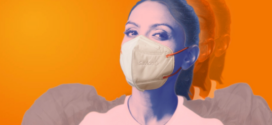Seasonal changes often pose a silent threat to our respiratory health. Respiratory infections tend to increase as temperatures drop, an alarming precursor to more serious illnesses such as pneumonia. The recent spike in pneumonia cases in Hyderabad have highlighted the importance of understanding, managing and preventing these infectious diseases.
Seasonal Effects and Disease Progression
The prevalence of respiratory tract infections tends to increase during every change of season. Change of weather can weaken our immune systems and make us more susceptible to viral, bacterial, and fungal infections. If left untreated, these infections can lead to pneumonia. A recent statistic shows a significant increase in pneumonia cases The average prevalence of Pneumonia in India was 2.7% in 2015-16, which marginally increased to 2.8% in 2019-21 and we are witnessing a similar trend in the city.
Understanding the Disease Process
Pneumonia, a serious respiratory disease, occurs when the lungs become infected with pathogens such as bacteria, viruses, and fungi. Typical symptoms include fever, cough, difficulty breathing, and chest pain. If not treated quickly, complications can occur and, in severe cases, respiratory failure.
Challenges in Treating Pneumonia
Treating pneumonia presents multiple challenges, and antibiotic resistance, pathogen diversity, and potential complications in vulnerable populations further complicate these challenges. Timely diagnosis, especially the differentiation between viral and bacterial pneumonia, is essential for effective treatment.
Innovations in Management
Despite these challenges, advances in pneumonia management offer hope. Innovations include the development of new vaccines against specific pathogens, improved diagnostic tools to quickly identify pathogens, and continued research into new treatment options.
Prevention
Important steps to protect your respiratory health Precautions play an important role in preventing pneumonia. These include practicing good hygiene, especially frequent hand washing, maintaining current vaccinations (such as influenza and pneumococcal vaccines), avoiding exposure to smoke, and practicing respiratory etiquette by covering your mouth when coughing and sneezing and so on. A multi-pronged approach is needed to deal with the rapidly increasing number of pneumonia cases. Strengthening health infrastructure, ensuring access to appropriate medicines, increasing public awareness of preventive measures and implementing comprehensive vaccination campaigns are key steps.
Community Engagement and Health Interventions
Community engagement through education and awareness campaigns is important. Promoting regular health check-ups, promoting a healthy lifestyle, and disseminating accurate information about pneumonia and its prevention can significantly reduce the incidence of pneumonia.
Conclusion
The rise in pneumonia cases highlight the urgency of tackling respiratory infections. Understanding disease progression, effectively treating disease, and prioritizing preventive measures are important steps in combating this health challenge.
Managing seasonal changes and managing the rise in respiratory infections requires collaborative efforts by health care providers, policy makers, and communities. By raising awareness, strengthening health infrastructure, adopting prevention strategies, we can strive for a healthier future, protect our respiratory health, and minimize the impact of pneumonia epidemics. It is also cardinal for the masses to remember that in case there are symptoms of cough, cold and fever in children, one should avoid self-medication and consult a doctor for proper diagnosis and initiate the proper treatment
Dr. Srinivas Jakka, Senior Consultant Paediatrician and Pulmonologist, Ankura Hospital for Women and Children
 Newspatrolling.com News cum Content Syndication Portal Online
Newspatrolling.com News cum Content Syndication Portal Online



